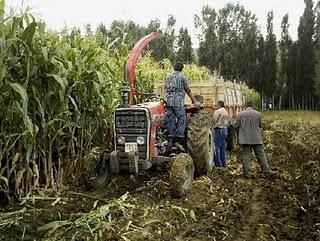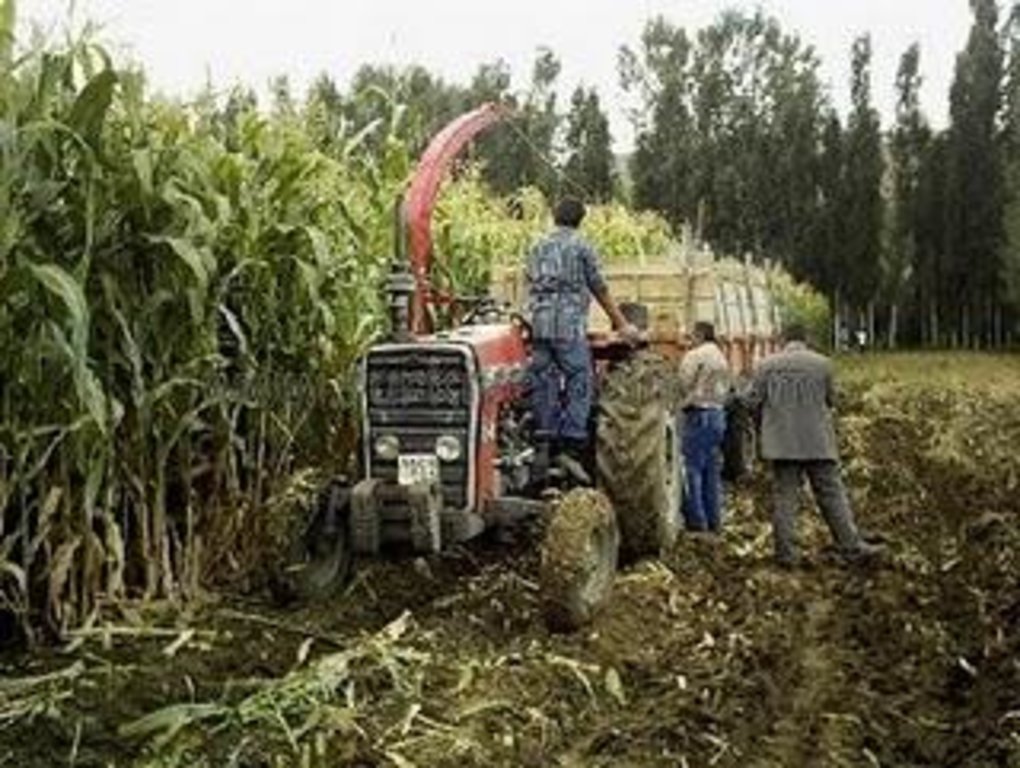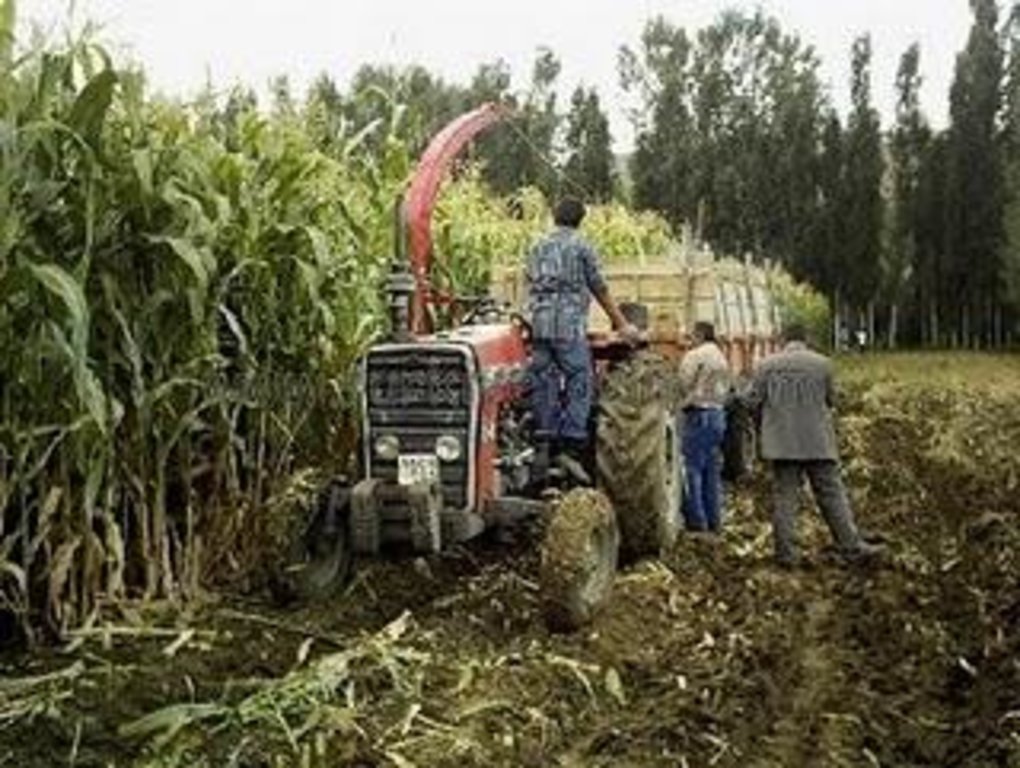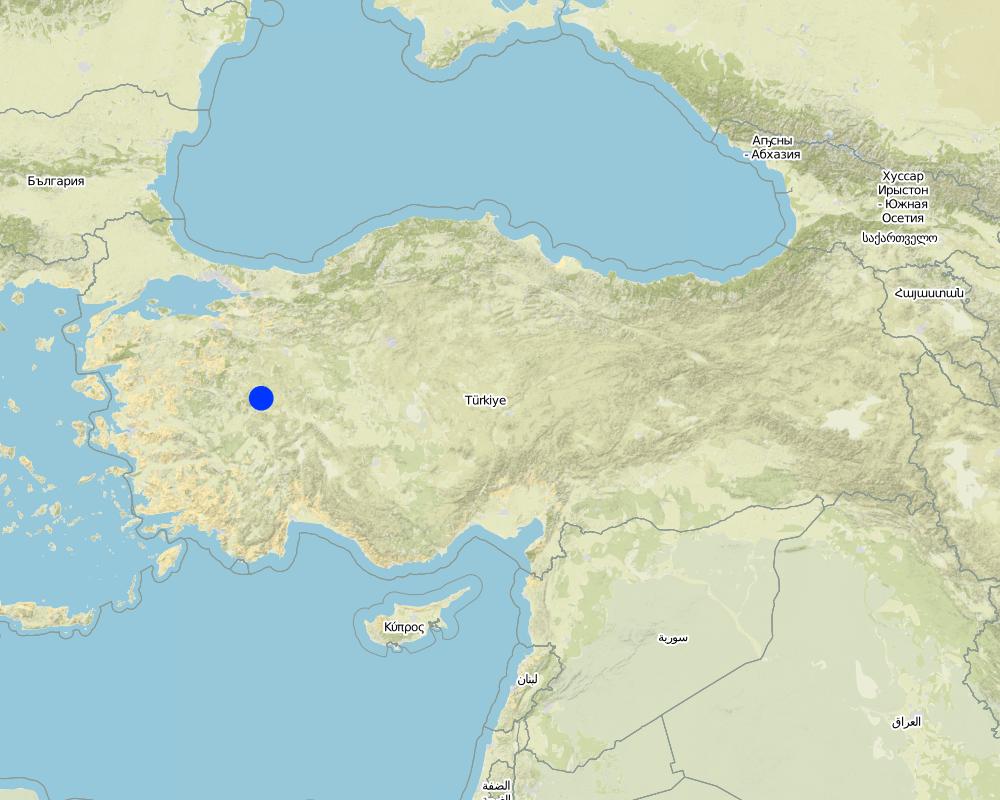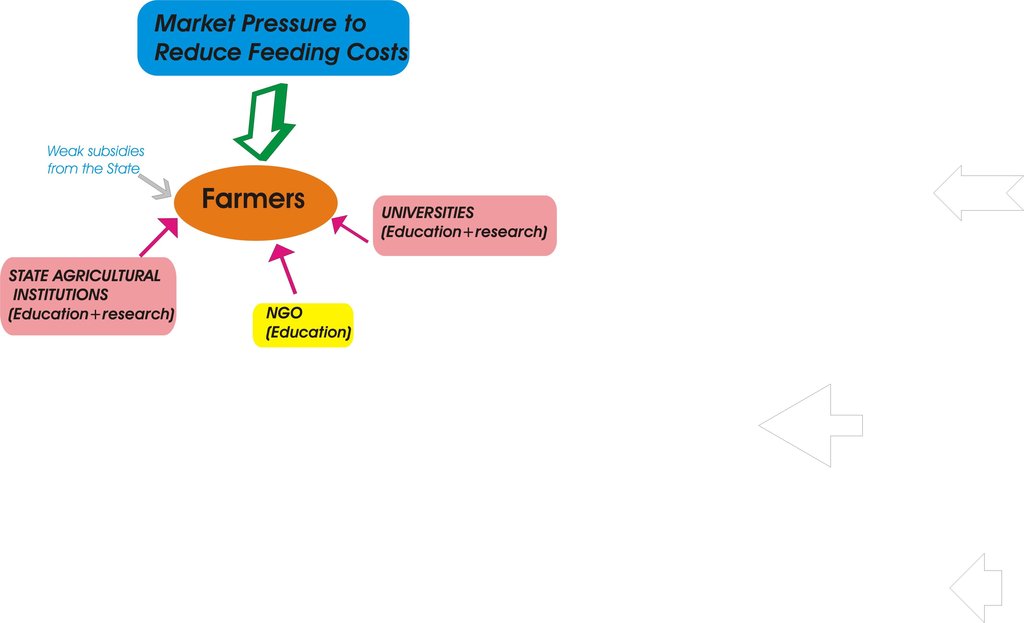Fodder Crops Production [Turquia]
- Criação:
- Atualização:
- Compilador/a: Unknown User
- Editor: –
- Revisor: Fabian Ottiger
approaches_2425 - Turquia
Veja as seções
Expandir tudo Recolher tudo1. Informação geral
1.2 Detalhes do contato das pessoas capacitadas e instituições envolvidas na avaliação e documentação da abordagem
Pessoa(s) capacitada(s)
Especialista em GST:
Tolay Inci
Turquia
1.3 Condições em relação ao uso da informação documentada através de WOCAT
O compilador e a(s) pessoa(s) capacitada(s) aceitam as condições relativas ao uso de dados documentados através do WOCAT:
Sim
1.4 Referência ao(s) questionário(s) sobre tecnologias da GST
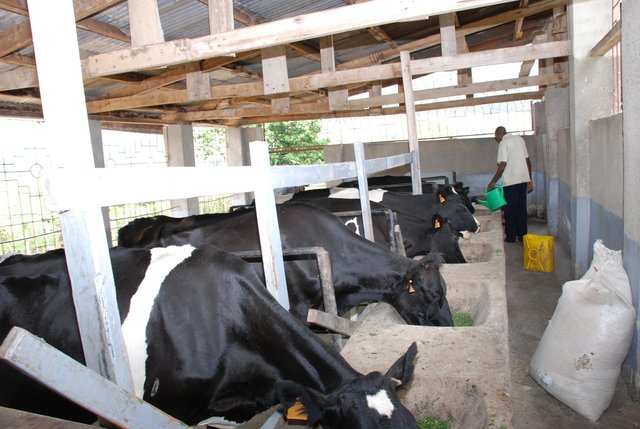
Dairy cattle fed with supplementary fodder [Uganda]
Elephant grass (Pennisteum purpureum) and calliandra (Calliandra calothyrsus), are harvested and chopped using a chaff cutter to produce fodder for dairy cows. The chaff is then mixed with cotton seed cake, molasses and maize bran to improve palatability and nutrient quality for dairy cows. The cattle graze in paddocks during …
- Compilador/a: Aine Amon
2. Descrição da abordagem de GST
2.1 Descrição curta da abordagem
To grow different fodder crop species (leguminous and graminous) for feeding livestock
2.2 Descrição detalhada da abordagem
Descrição detalhada da abordagem:
Aims / objectives: It is aimed to grow livestocks feed for reduce costs of inputs in farms. Ease of feeding by this way is another motivation. Fodder crops especially leguminous ones are also very useful for improving and protecting soil fertility. Therefore farmers who produce both crops and livestock prefer to grow fodder crops.
Methods: Leguminous (alfaalfa, soinfoin, vetch) and graminous (corn for silage, barley, wheat, oat, triticale, rye) fodder species are grown in different growing seasons. Graminous fodder species are grown annually, among the leguminous species. Alfaalfa, sainfain are perennial and vetch is an annual species. The fodder species can be grown under dry conditions except corn. Leguminous species can not grow well if there is not enough rainfall; therefore they need irrigation. Application of the approach is mostly forced by market conditions where meat incomes were gradually decreasing in the last years due to macroeconomic policies. Training of the farmers is achieved by state institutions, universities and NGO's in a rather discontinous and sporadic way.
Stages of implementation: Soil tillage, fertilizing the soil, sowing the seeds, irrigation, harvest (1 for graminous species several times for leguminous species). Starting the approach by individual farmers is done by traditional communication and sometimes by training activities.
Role of stakeholders: All stages of the technology application are performed by participants. Technology is applied by farmers who have all the facilities needed for technology. They get some subsidizes from the state because of promoting the fodder crop production. State organisations, universities and NGO's provide irregular training courses and demonstrations. Rare scientific studies in terms of advantages of approcah are conducted by universities and state research institutes.
2.3 Fotos da abordagem
2.5 País/região/locais onde a abordagem foi aplicada
País:
Turquia
Região/Estado/Província:
Turkey
Especificação adicional de localização:
Keskin watershed, EskiÅŸehir
Map
×2.6 Datas de início e término da abordagem
Indique o ano de início:
10
2.7 Tipo de abordagem
- Iniciativa/inovação local recente
2.8 Principais metas/objetivos da abordagem
The Approach focused on SLM only
To reduce fodder input expenses by livestock producers.
The SLM Approach addressed the following problems: The problems to be addressed by the approach mainly arise from drought which increases recently. Because fodder crops production mainly relies on natural rainfall in the region. Also, lack of technical knowledge is another problem. Governmental unstability for subsiding fodder crops is also one of the problem for maintaining the approach.
2.9 Condição que propiciam ou inibem a implementação de tecnologia/tecnologias aplicada(s) segundo a abordagem
Normas e valores sociais/culturais/religiosos
- Inibitivo
Education level of farmers is low and woman do not participate in performing approach.
Treatment through the SLM Approach: no solution yet.
Disponibilidade/acesso a recursos e serviços financeiros
- Inibitivo
Input casts are high.
Treatment through the SLM Approach: Government partly subsidizes crop production.
Quadro jurídico (posse de terra, direitos de uso da terra e da água)
- Inibitivo
Some of land use rights are belong to a foundation, because of that some of farmers can not got subsidizes given by government.
Treatment through the SLM Approach: No solution yet.
Conhecimento sobre GST, acesso a suporte técnico
- Inibitivo
Some growing techniques are not known well.
Treatment through the SLM Approach: Farmers get some help from governmental institutions. But most of them are aware of this.
3. Participação e papel das partes interessadas envolvidas
3.1 Partes interessadas envolvidas na abordagem e seus papéis
- Usuários de terra/comunidades locais
Because of cultural, educational and social reasons there are differences between the genders. Women are not well educated and much more interested in house works and children.
Both small and large scale farmers apply technology for its benefit.
3.2 Envolvimento do usuários de terra/comunidades locais nas diferentes fases da abordagem
| Envolvimento do usuários de terra/comunidades locais | Especifique quem estava envolvido e descreva as atividades | |
|---|---|---|
| Iniciação/motivação | Automobilização | |
| Planejamento | Automobilização | |
| Implementação | Automobilização | |
| Monitoramento/avaliação | Nenhum | |
| Research | Nenhum |
3.3 Fluxograma (se disponível)
3.4 Decisão sobre a seleção de tecnologia/tecnologias de GST
Especifique quem decidiu sobre a seleção de tecnologia/tecnologias a serem implementadas:
- Somente usuários da terra (iniciativa própria)
Explique:
Decisions on the method of implementing the SLM Technology were made by by land users* alone (self-initiative / bottom-up)
4. Suporte técnico, reforço das capacidades e gestão do conhecimento
4.1 Reforço das capacidades/formação
Foi oferecida formação aos usuários da terra/outras partes interessadas?
Sim
Especifique quem foi capacitado:
- Usuários de terra
4.3 Fortalecimento da instituição (desenvolvimento organizacional)
As instituições foram fortalecidas ou estabelecidas através da abordagem?
- Sim, pouco
Especifique a que nível (níveis) as instituições foram fortalecidas ou estabelecidas:
- Local
Especifique o tipo de apoio:
- Financeiro
4.4 Monitoramento e avaliação
Monitoramento e avaliação são partes da abordagem?
Sim
Comentários:
economic / production aspects were regular monitored by government, land users through measurements; indicators: amount of yield
area treated aspects were regular monitored by government through observations; indicators: for the subsidies
no. of land users involved aspects were ad hoc monitored by project staff through measurements; indicators: None
management of Approach aspects were None monitored by None through observations; indicators: None
There were few changes in the Approach as a result of monitoring and evaluation: Monitoring and evaluation activities have indirect and weak effect upon the approach since applicability of the approach is determined mostly by the demand of market.
There were few changes in the Technology as a result of monitoring and evaluation: Monitoring activities are mostly aimed to determine the subsidy payment but not to assess the efficacity of the technology. But the results of research projects is supposed to have a small impact upon the application of technology.
4.5 Pesquisa
A pesquisa foi parte da abordagem?
Sim
Dê mais detalhes e indique quem realizou a pesquisa:
Research was carried out on-farm
5. Financiamento e apoio material externo
5.1 Orçamento anual para o componente de GST da abordagem
Caso o orçamento exato seja desconhecido, indique a faixa:
- 10.000-100.000
Comentários (p. ex. principais fontes de recursos/principais doadores):
Approach costs were met by the following donors: government (as subsidies): 20.0%; local community / land user(s): 80.0%
5.2 Apoio financeiro/material concedido aos usuários da terra
Os usuários da terra receberam apoio financeiro/material para a implementação de tecnologia/tecnologias?
Sim
5.3 Subsídios para entradas específicas (incluindo mão-de-obra)
- Agrícola
| Especifique quais entradas foram subsidiadas | Em que medida | Especifique os subsídios |
|---|---|---|
| Sementes | Parcialmente financiado | |
5.4 Crédito
Foi concedido crédito segundo a abordagem para atividades de GST?
Não
6. Análise de impactos e declarações finais
6.1 Impactos da abordagem
A abordagem auxiliou os usuários da terra a implementar e manter as tecnologias de GST?
- Não
- Sim, pouco
- Sim, moderadamente
- Sim, significativamente
Land users apply crop rotation when they use the approach. Leguminous fodder species provide nitrogen to the soil. It improves soil fertility so help sustainable land management.
A abordagem melhorou as questões de posse de terra/diretos do usuário que inibiam a implementação das tecnologias de GST?
- Não
- Sim, pouco
- Sim, moderadamente
- Sim, significativamente
Did other land users / projects adopt the Approach?
- Não
- Sim, pouco
- Sim, moderadamente
- Sim, significativamente
Did the Approach lead to improved livelihoods / human well-being?
- Não
- Sim, pouco
- Sim, moderadamente
- Sim, significativamente
It moderately changed life quality by its ease in animal feeding and increase farm income.
6.2 Principal motivação dos usuários da terra para implementar a GST
- Produção aumentada
Using fodder crops allow farmers to feed their animals better and hence rise the quality of feeding.
- Lucro (lucrabilidade) aumentado, melhora da relação custo-benefício
approach basically diminish the cost of feeding and allow use of domestic (own) resources.
- Pagamentos/subsídios
Central government gives significant subsidies.
- Consciência ambiental
Farmers know that the fodder crops enrich the texture and chemistry of soil.
6.3 Atividades de sustentabilidade de abordagem
Os usuários da terra podem manter o que foi implementado através da abordagem (sem apoio externo)?
- Incerto
Caso negativo ou incerto, especifique e comente:
Governmental supports (subsidies) help to continue the approach. If subsidies are not given, land users can not afford easily the approach. Additionally, if the pressure of market is higher they might totaly abandon animal feeding.
6.4 Pontos fortes/vantagens da abordagem
| Pontos fortes/vantagens/oportunidades na visão do usuário da terra |
|---|
| It guarantees feeding their livestock. They are not affected from fluctuation in the price and presence of fodders in the market. (How to sustain/ enhance this strength: By technical help.) |
| It reduces input costs. (How to sustain/ enhance this strength: By financial support of government.) |
| Pontos fortes/vantagens/oportunidades na visão do compilador ou de outra pessoa capacitada |
|---|
| It improves soil fertility. (How to sustain/ enhance this strength: informing farmers to use certain fodder crops such as leguminous fodders.) |
| It helps farmers to reduce inputs costs. (How to sustain/ enhance this strength: By continuous governmental support.) |
6.5 Pontos fracos, desvantagens da tecnologia e formas de superá-los
| Pontos fracos/desvantagens/riscos na visão do usuário da terra | Como eles podem ser superados? |
|---|---|
| Livestock production is stricted by municipality due to internal regulations. | By loosing legal constrains. |
| Farmers are getting avoid to produce livestocks. | By governmal regulations. |
| Pontos fracos/vantagens/riscos na visão do compilador ou de outra pessoa capacitada | Como eles podem ser superados? |
|---|---|
| Drought greately effects yield | By increasing irrigation facilities, and hence state help. |
| It needs governmental support. | By stabilizing subsidies |
7. Referências e links
7.1 Métodos/fontes de informação
- visitas de campo, pesquisas de campo
- entrevistas com usuários de terras
Links e módulos
Expandir tudo Recolher tudoLinks

Dairy cattle fed with supplementary fodder [Uganda]
Elephant grass (Pennisteum purpureum) and calliandra (Calliandra calothyrsus), are harvested and chopped using a chaff cutter to produce fodder for dairy cows. The chaff is then mixed with cotton seed cake, molasses and maize bran to improve palatability and nutrient quality for dairy cows. The cattle graze in paddocks during …
- Compilador/a: Aine Amon
Módulos
Não há módulos


